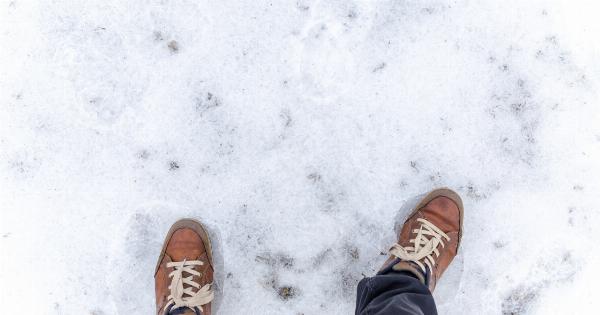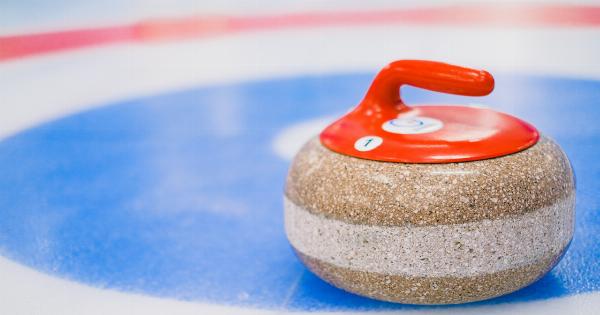Have you ever experienced the sensation of your legs feeling frozen, numb, or uncontrollable? This commonly occurs during outdoor activities in cold weather.
While it may seem like a temporary inconvenience, understanding the science behind frozen legs and learning how to prevent and remedy it can greatly enhance your cold-weather experiences. In this article, we will delve into the reasons behind frozen legs and provide effective solutions to fix the issue.
Why Do Legs Freeze in Cold Weather?
When exposed to low temperatures, our bodies have a natural response to protect vital organs by decreasing blood flow to the extremities.
This phenomenon, known as vasoconstriction, limits blood circulation to the arms, legs, hands, and feet, leaving them more vulnerable to freezing and numbness. Additionally, the cold temperature itself can irritate nerve endings in the legs, intensifying the sensations of numbness and discomfort.
Furthermore, engaging in physical activities, such as hiking or running, exacerbates the sensation of frozen legs. When we exercise, our body temperature rises, and blood flow increases to provide our muscles with oxygen and energy.
The combination of increased blood flow and exposure to cold temperatures creates a larger temperature difference between our core and extremities, making our legs more susceptible to freezing.
Preventing Frozen Legs
While it may be challenging to completely prevent the occurrence of frozen legs in cold weather, there are several measures you can take to minimize the risk. Here are some helpful strategies:.
1. Dress Appropriately
Wearing the right clothing is crucial for protecting your legs from freezing. Opt for thermal or insulated leggings that provide insulation and trap the heat close to your skin.
Layering your bottoms with moisture-wicking fabrics should be considered to prevent moisture accumulation, which can further exacerbate cold sensations.
2. Keep Legs Dry
Moisture, whether from sweat or snow, can significantly increase the risk of frozen legs. Choose breathable fabrics that wick away moisture from your skin, and avoid cotton material that retains sweat.
Use waterproof or water-resistant pants if you anticipate wet conditions and ensure you have a dry change of clothes readily available.
3. Stay Active
Maintaining physical activity and movement during cold weather helps promote blood flow to your legs. By staying active, you increase your body’s ability to keep your extremities warm.
Incorporate leg exercises, such as lunges or squats, into your routine to improve circulation in the lower limbs.
4. Warm-Up Exercises
Prior to engaging in any outdoor activities, perform a series of warm-up exercises. This helps increase your overall body temperature and prepares your muscles and blood vessels for the cold environment.
Focus on dynamic stretches that target your legs, such as leg swings or high knees.
5. Protect Your Legs
Invest in good-quality thermal leg warmers or leg sleeves to provide an additional layer of insulation. These accessories are designed to retain heat and protect your legs from the harsh cold.
Additionally, wear well-insulated socks and waterproof footwear to minimize heat loss and maintain dryness.
6. Utilize Heat Packs
If you frequently experience frozen legs or know you will be in an exceptionally cold environment, consider using heat packs. These portable and disposable packs can be inserted into your pockets or attached to your legs to provide extra warmth.
Ensure you follow the instructions on the heat pack packaging to avoid burns.
7. Stay Hydrated
Proper hydration is essential regardless of the weather conditions. Drinking sufficient amounts of water helps regulate your body temperature and prevents dehydration, which can affect blood flow to your legs.
Carry a water bottle with you and drink regularly, even if you do not feel thirsty.
8. Avoid Alcohol and Caffeine
Alcohol and caffeine can negatively impact circulation and contribute to a higher risk of frozen legs. These substances can constrict blood vessels, reducing blood flow to your extremities.
Limit your intake of alcohol and caffeine before and during your cold-weather activities.
9. Take Regular Breaks
During prolonged periods of outdoor activities in cold weather, schedule regular breaks to warm up and restore blood flow to your legs.
Find sheltered areas, such as a heated cabin or café, where you can relax and allow your body to recover from the cold.
Fixing Frozen Legs
If you find yourself with frozen legs despite taking preventive measures, it is crucial to address the issue promptly. Here are some effective ways to fix frozen legs:.
1. Seek Warmth and Shelter
When your legs feel frozen, the first and most important step is to get out of the cold environment. Find shelter indoors or in a heated area as soon as possible. Remove any wet clothing and replace it with dry layers.
2. Massage and Rub Your Legs
Massage and rub your legs gently to stimulate blood circulation and restore sensation. Use warm hands and apply gentle pressure, moving in upward motions from your feet towards your thighs. This promotes blood flow and helps alleviate the frozen feeling.
3. Warm Water Soak
If available, soak your legs in warm (not hot) water. This method helps gradually raise the temperature of your legs and promotes blood flow. Avoid using hot water, as it can cause burns or damage to your skin.
4. Exercise and Stretch
Engage in light leg exercises and stretching once you are in a warm environment. This stimulates blood circulation and helps your legs recover from the frozen state. Perform gentle leg swings, ankle circles, and calf raises to get your muscles moving.
5. Apply Heat Packs
If you have access to heat packs, use them to warm up your legs. Attach the heat packs to your thighs or calves, following the instructions provided. It is essential to be cautious and avoid prolonged exposure to high temperatures to prevent burns.
6. Consume Warm Fluids
Drink warm liquids, such as tea or warm water, to help increase your core body temperature. This indirectly facilitates the warming of your legs. Avoid consuming extremely hot fluids, as they can burn your mouth and throat.
7. Elevate Your Legs
If possible, elevate your legs slightly to assist with blood circulation. Prop your feet up on a pillow or cushion, allowing gravity to aid in the return of blood from your lower limbs to your heart.
Conclusion
Frozen legs can be an uncomfortable and distressing experience, but by understanding the science behind it and adopting preventive measures, you can enjoy outdoor activities even in cold weather.
Dress appropriately, stay active, and protect your legs to minimize the risk of feeling frozen. If your legs do become frozen, seek warmth, massage your legs, and perform exercises to promote blood flow and restore sensation. Remember, your well-being and comfort should always be a top priority when venturing into the cold.






























